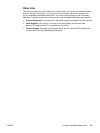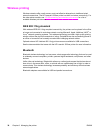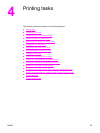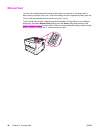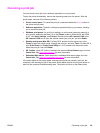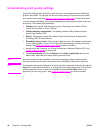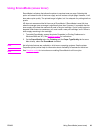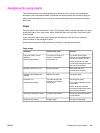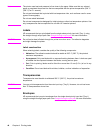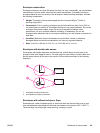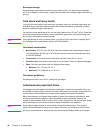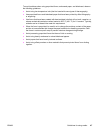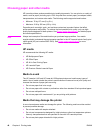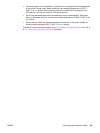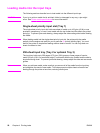
Guidelines for using media
The following sections provide guidelines and instructions for printing on transparencies,
envelopes, and other special media. Guidelines and specifications are included to help you
select media that optimizes print quality and avoid media that may cause jams or damage
the printer.
Paper
For best results, use conventional 75 g/m
2
(20 lb) paper. Make sure that the paper is of good
quality and free of cuts, nicks, tears, spots, loose particles, dust, wrinkles, voids, and curled
or bent edges.
If you are unsure about what type of paper you are loading (such as bond or recycled),
check the label on the package of paper.
Some paper causes print quality problems, jamming, or damage to the printer.
Paper usage
Symptom Problem with paper Solution
Poor print quality or toner
adhesion.
Problems with feeding.
Too moist, too rough, too
smooth, or embossed.
Faulty paper lot.
Try another kind of paper:
between 100-250 Sheffield and
4-6 percent moisture content.
Check the printer and make
sure that the appropriate media
type has been selected.
Dropouts, jamming, or curl. Stored improperly. Store paper flat in its
moistureproof wrapping.
Increased gray background
shading.
Might be too heavy. Use lighter paper.
Excessive curl.
Problems with feeding.
Too moist, wrong grain
direction, or short-grain
construction.
Use long-grain paper.
Print using the straight-through
output path.
Check the printer and make
sure that the appropriate media
type has been selected.
Jamming or damage to printer. Cutouts or perforations. Do not use paper with cutouts
or perforations.
Problems with feeding. Ragged edges. Use good quality paper.
ENWW Guidelines for using media 43



